The Beast Barbarian in D&D 5e draws their strength from a powerful and primal fury deep within themselves.
If you find yourself near one of these warriors, look out! When the rage within them awakens, they begin to transform into… something else…
Lashing out at enemies with tooth, claw, and tail in a feral fury, it’s a truly terrifying thing when they lose their temper!
Do you wish to awaken the beast within you? This is the full guide to the Beast Barbarian in D&D 5e!
What is the Beast Barbarian in D&D 5e?
It’s an understatement to say that Barbarians just “get mad” when they enter a rage.
Realistically, they’re tapping into the deepest and most primal instincts within themselves. From there, it’s the enemy’s problem to deal with.
But the Beast Barbarian digs deeper within themselves. There they access a strength so raw and powerful that it even causes their body to change form.
Growing sharp fangs or crushing mandibles, claws like razors, or spiny tails, Beast Barbarians represent a type of primal ferocity.
Instead of (or in addition to) swinging an ax or sword, these Barbarians pounce on their enemies like a wild predator attacking its prey. Biting and clawing their way through their enemies’ ranks, they might even seem to be possessed.
Who knows? In some situations, that might even be the exact case!
Perhaps more than any other class in D&D 5e, the Beast Barbarian intimately knows one thing to be true above all else: in the wild, you’re either the hunter or the prey.
The Beast Barbarian appears alongside the Wild Magic Barbarian in Tasha’s Cauldron of Everything.
Role in the Party
One of the things that stands out most about the Beast Barbarian is just how versatile it is. That means it’s difficult to put them in a definitive role within the party.
They are certainly at their best when fighting on the party’s frontlines and wouldn’t have it any other way.
But depending on the situation at hand, they’re able to adapt their form to fit what the situation calls for.
Sometimes they will want to take a form that makes them more suited to going on the offense. Other times, it might be better to use a form that will give you better defensive options.
Plus, you’ll also be able to take certain adaptations that will help you swim, climb, and jump. In situations where more athleticism is needed, you’re a top pick!
While the Beast Barbarian may seem to be somewhat all over the place, it actually works very well!

Beast Barbarian Features 5e
The Beast Barbarian gets some seriously cool features.
Not only are they awesome concepts, but the extra options within each feature mean that you are able to stay flexible.
Whatever situation you’re facing, you can adapt and overcome it!
The early levels are all about harnessing the beast within yourself and gaining various adaptations. From there, you’ll be able to start bringing the rage out in others.
Forcing enemies to attack their own team is always fun. Though, leading your team in a frenzied all-out attack is even more so!
So let’s get into the details with each feature you’ll be gaining.
Form of the Beast (Level 3)
First things first, we’ve got the Beast Barbarian’s core feature.
With Form of the Beast, you’re able to undergo a physical transformation every time you rage as your inner beast comes out to play.
Until your rage ends, you manifest a natural weapon. It counts as a simple melee weapon for you, and you add your Strength modifier to the attack and damage rolls when you attack with it, as normal.
You’ve got three options for how this transformation looks. While you’ll probably find yourself with a “go-to” favorite, don’t forget that you choose which of these options you want as you enter your rage.
Realistically, there will be times, places, and situations for each of these to shine. Knowing which one to use and when will be important!
So we’ll take this one bit by bit.
Related: Barbarian Rage in D&D 5e Explained
Bite
As a Barbarian, you’re almost guaranteed to take the most damage in any combat. This option gives you a way to recover hit points while biting into your enemies.
Your mouth transforms into a bestial muzzle or great mandibles (your choice.)
It deals 1d8 piercing damage on a hit.
Once on each of your turns when you damage a creature with this bite, you regain a number of hit points equal to your proficiency bonus, provided you have less than half your hit points when you hit.
The big draw here is that you can still use your hands for other things. That means you don’t need to drop your weapon(s) and/or shield to get the full use out of this.
Healing an average of 4 hit points per turn with this adds up. If you’re already at less than half of your total hit points, this can be a good option to help you hold the line.
Just note that you only get this healing once per turn. If you successfully land a bite attack, feel free to follow up with a swing of your weapon once you’ve got the Extra Attack feature at level 5.
You know, unless that terrified bandit just looks especially tasty.
Claw
If you’re looking for pure damage-dealing awesomeness, go with the Claws option.
You’ll be able to deal with whatever enemy you’re fighting quickly, though not necessarily cleanly…
Each of your hands transforms into a claw which you can use as a weapon if it’s empty.
It deals 1d6 slashing damage on a hit.
Once on each of your turns when you attack with a claw using the Attack action, you can make one additional claw attack as part of the same action.
This is an excellent way to get the most out of your action economy.
The second attack with your claw happens right after your first claw attack on the same action. So you’re able to get two hits in right out of the gate at level 3.
Once you gain the Extra Attack feature, you’re making three attacks per turn!
The 1d6 damage itself is okay, but the modifiers from your Strength and Rage will do a lot of heavy lifting for you.
There’s a whole can of worms about using these claws and two-weapon fighting that we’ll open towards the end of this article. For now, I want to keep moving on with explaining simply what the features are.
Tail
Finally, we have the more defensive option.
Personally, this is my favorite of the three options as a general “go-to” form.
You grow a lashing, spiny tail that deals 1d8 piercing damage on a hit and has the reach property.
If a creature you can see within 10 feet of you hits you with an attack roll, you can use your reaction to swipe your tail and roll a d8, applying a bonus to your AC equal to the number rolled, potentially causing the attack to miss you.
1d8 is respectable damage that is on par with a longsword. However, it also has the “reach” property, which is excellent. This means you can tail-smack enemies that are 10 feet away from you now!
But the real draw to this option is the defensive reaction you get from it.
With the exception of enemies that are attacking you with ranged weapons like bows, you’re able to add an average of +4 to your AC.
Since you belong on the frontlines, you’ll be getting plenty of use out of this. For the low cost of a reaction, it’s a great benefit to have.
Note that this bonus to your AC does only work for the attack you’re using this for. If you tail-swipe the enemy’s first attack and they miss but have a second attack, you’ll have your normal AC for that.
Fortunately, you are able to use this after confirming that their attack would normally hit. That prevents you from wasting it on an attack that wasn’t going to hit you in the first place.
Additionally, having a tail doesn’t impact your ability to wield a shield!
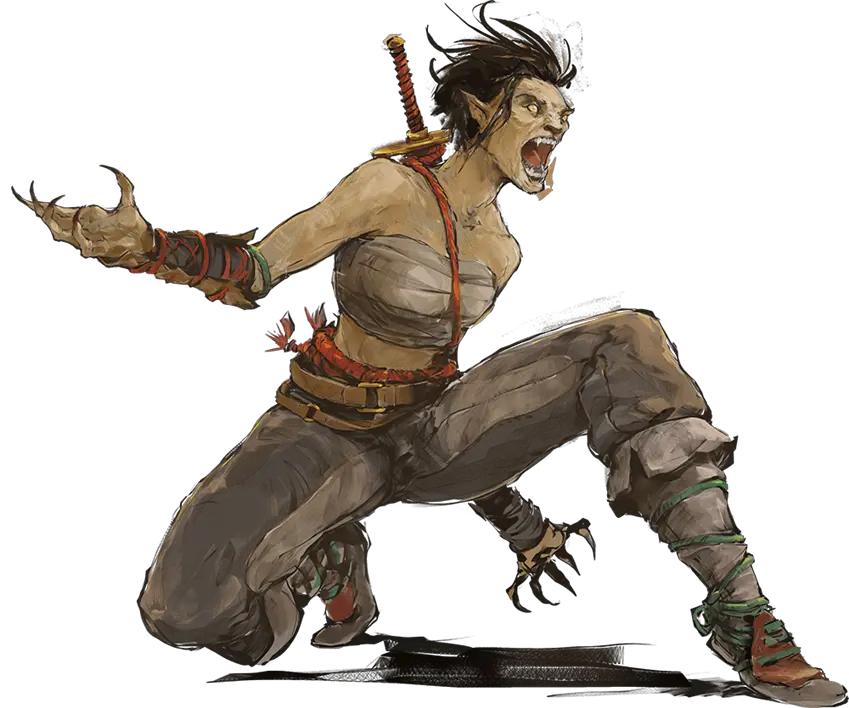
Bestial Soul (Level 6)
As the beast within you grows stronger, your capabilities continue to increase! When you hit level 6, you get a nice upgrade to your bestial abilities.
Once again, this is a feature that comes with several options so we’ll take it bit by bit!
Your natural weapons from Form of the Beast now count as magical for the purpose of overcoming resistance and immunity to nonmagical attacks and damage.
The first part of Bestial Soul is sweet and simple. Enemies (like werewolves or specters) that resist nonmagical attacks will now take full damage from attacks you make with the natural weapons you gain with Form of the Beast.
That’s great and certainly helpful, but let’s get to the really fun part!
You can also alter your form to help you adapt to your surroundings. When you finish a short or long rest, choose a benefit that lasts until you finish your next short or long rest.
Swimming (Option 1): You gain a swimming speed equal to your walking speed and can breathe underwater.
Climbing (Option 2:) You gain a climbing speed equal to your walking speed and can climb difficult surfaces (including upside down on ceilings) without needing to make an ability check.
Jumping (Option 3): When you jump, you can make a Strength (Athletics) check and extend your jump by a number of feet equal to the check’s total. You can make this special check only once per turn.
These don’t require you to be raging to use and being able to swap them on a rest means you should almost always be able to adapt to whatever the situation calls for.
The options themselves are pretty straightforward.
You’ll generally be defaulting to the climb speed (option 2) since that’s the most universally useful. Besides, crawling along the ceiling like something out of The Exorcist is just fun.
The others are more situational, but nice when they’re needed.
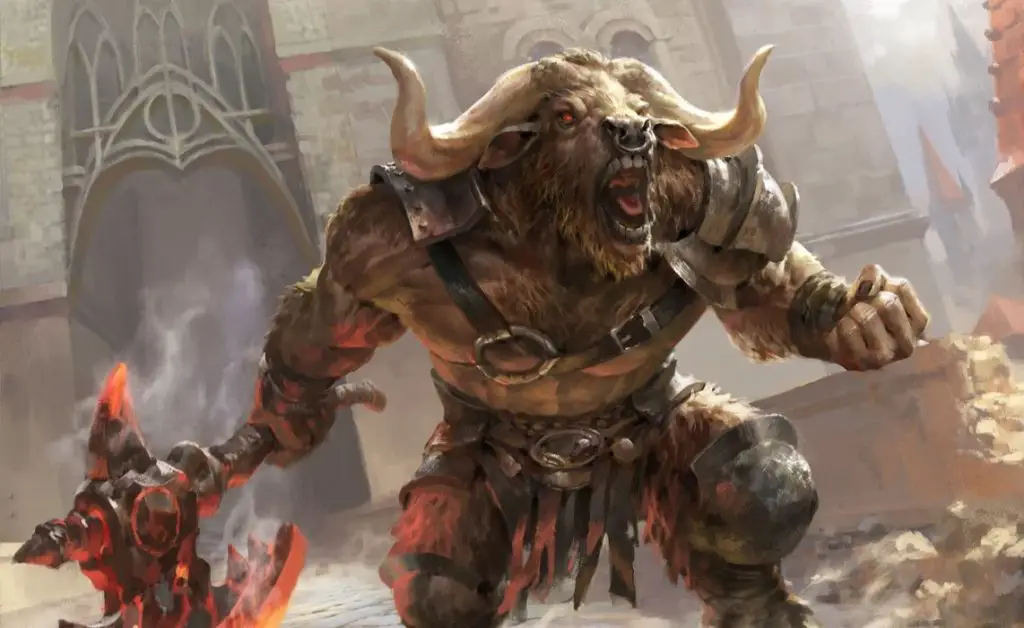
Infectious Fury (Level 10)
As it just so happens, the whole “sharing is caring” thing also applies to raging, primal fury.
Or maybe it was “sharing is scaring”?
Either way…
When you hit a creature with your natural weapons while you are raging, the beast within you can curse your target with rabid fury.
The target must succeed on a Wisdom saving throw (DC equal to 8 + your Constitution modifier + your proficiency bonus) or suffer one of the following effects (your choice):
Option 1: The target must use its reaction to make a melee attack against another creature of your choice that you can see.
Option 2: The target takes 2d12 psychic damage.
You can use this feature a number of times equal to your proficiency bonus, and you regain all expended uses when you finish a long rest.
If you’re fighting a single enemy, it will usually be best to go with the second option.
Psychic damage is reliable and 2d12 damage is solid until you start hitting the higher levels when forcing an enemy to attack their allies would deal more damage.
As for Option 2, it’s endlessly fun to force enemies to attack their own allies.
You’ll want to prioritize the heaviest hitter on the enemy team and have them smack whichever of their allies is next to them.
Also, keep in mind that you’re also making them burn their reaction. This means that they can’t take opportunity attacks which can create some useful openings for you and your team!
Make sure you’re investing plenty of points into your Constitution score. Not only will that increase your hit point total, but it will also increase the DC that your enemies have to beat to resist this feature!
Recommended: Full Guide to the Barbarian’s Reckless Attack
Call the Hunt (Level 14)
Speaking of bringing out the fury in others…
With Call of the Hunt, you’re able to give a very nice offensive buff to your allies. Even better, you’ll become even more resilient by doing so!
When you enter your rage, you can choose a number of other willing creatures you can see within 30 feet of you equal to your Constitution modifier (minimum of one creature.)
You gain 5 temporary hit points for each creature that accepts this feature.
Until the rage ends, the chosen creatures can each use the following benefit once on each of their turns: when the creature hits a target with an attack roll and deals damage to it, the creature can roll a d6 and gain a bonus to the damage equal to the number rolled.
You can use this feature a number of times equal to your proficiency bonus, and you regain all expended uses when you finish a long rest.
This is an incredibly fun capstone feature that captures the idea of leading your allies in a ferocious all-out attack.
You will want to brush up on the rules for temporary hit points with this feature. It’s an important part of this feature and a mechanic that can be a little confusing.
Realistically, I can’t think of a situation in which you would offer a party member this buff and they wouldn’t accept it.
Weird wording aside, grant this to your allies who usually make attack rolls on their turn and overwhelm your enemies.
Also, note that attack rolls aren’t exclusively melee attacks. There are plenty of spell attacks that will benefit from this as well, so don’t ignore your spellcasters!
Don’t forget that you can also give this to any summons or animal companions the party has as well!
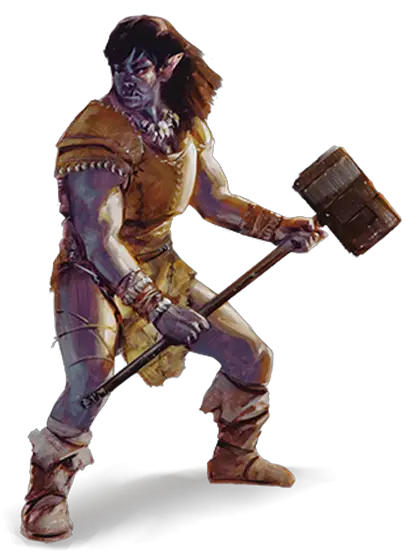
Claws + Dual Wielding as a Beast Barbarian
Ok, now that we’ve covered the class features, let’s go back and talk about the Dual Wielding Claws issue.
Things do get a little weird if you’re wanting to use your claws for two-weapon fighting.
If we’re being technical and going by the RAW, the claws are not “light weapons” and therefore you would need to pick up the Dual Wielder feat.
On the bright side, that’s getting you yet another claw attack per turn with your bonus action.
Four attacks per turn once you hit level 5 is pretty sweet! (2 claws from your first attack, 1 from your Extra Attack, 1 from your bonus action.)
Admittedly this does get really messy. There is no shortage of opinions out there on how to make this work.
If you’re looking to build a character like X-Men’s Wolverine, you might want to talk with your DM and get their ruling on the matter.
Personally, I’d be fine with considering the claws as light weapons for this purpose and letting the Barbarian have a field day. In the grand scheme of things, it really isn’t an unbalanced ruling.
Connections
When you’re looking to connect your Beast Barbarian into the story, focus on the powers that they gain from this Primal Path.
How do they view them? Are they proud of these powers or does it feel like something else just takes over them when they get too angry?
Consider the origin of these abilities.
For example, they might come from your ancestry.
If the powers are a curse, you might be descended from a lycanthrope like a werewolf, werebear, or the like.
While you haven’t succumbed to the curse, you might expect that it will happen eventually. Perhaps each level you gain in this subclass seems to be inching closer to that total transformation.
Or perhaps there is a powerful beast spirit that your tribe reveres.
Channeling the primal ferocity of this beast spirit, members of your tribe view these abilities as a blessing from the spirit.
Though this is also an opportunity to pull some inspiration from Wolverine from X-Men.
Used as a test subject by some mad scientist for their experiments, you woke to find yourself with these bestial abilities.
If and when you meet this person again, would you be thankful or hate them for ruining your life? Some complex mix of the two?
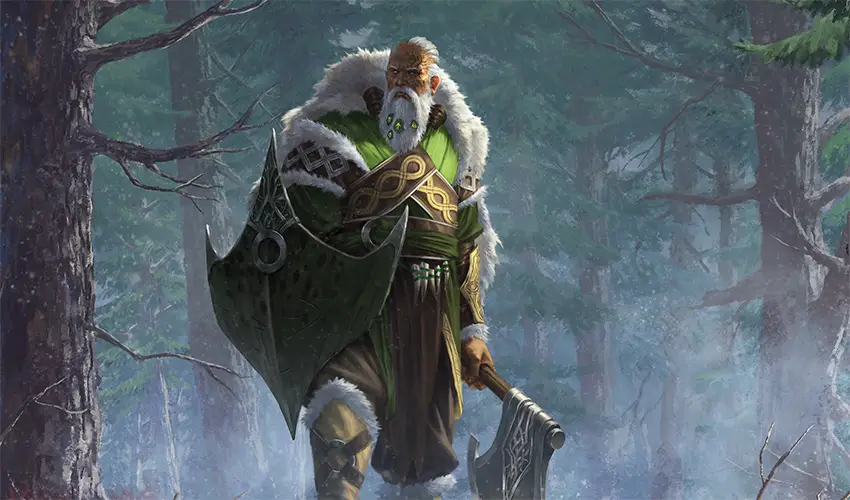
Is the Beast Barbarian Good?
The Beast Barbarian is a great option for those who want to play a frontline melee combatant with plenty of customization and versatility. After all, you can take on different beast qualities every time you rage!
This level of adaptability is pretty rare for Barbarians which makes the Path of the Beast stand out even more.
You’ve got plenty of decisions to make, but you don’t get locked into those decisions like you do with other subclasses.
Because of this, it’s a subclass that stays balanced and will always be able to bring value to the party.
Every feature stands out as being exciting and consistently usable! While some individual options within those features might be generally better than others, you’ll always be glad to have them when the need arises.
Not to mention, it’s got one of the coolest themes in all of D&D 5e!
Also Check Out: Ranking Every Barbarian Subclass in D&D 5e!
Conclusion – Beast Barbarian in D&D 5e
I hope you’ve found this guide helpful!
The Beast Barbarian is very high on my list of characters that I’m dying to play. There is just so much to it and it’s all incredibly exciting.
I mean, the character concepts for this are virtually limitless!
Have you played a Beast Barbarian or are considering doing so? Share your character’s backstory or concept in the comments below and let’s chat!
Want all the latest player guides, DM tips, news, reviews, and more for D&D 5e? Sign up for the Tabletop Joab newsletter below!
You can also follow me on Facebook and Twitter!
If you found this article helpful and want to support the site, you can buy me a coffee here! (It’s not expected, but very appreciated!)

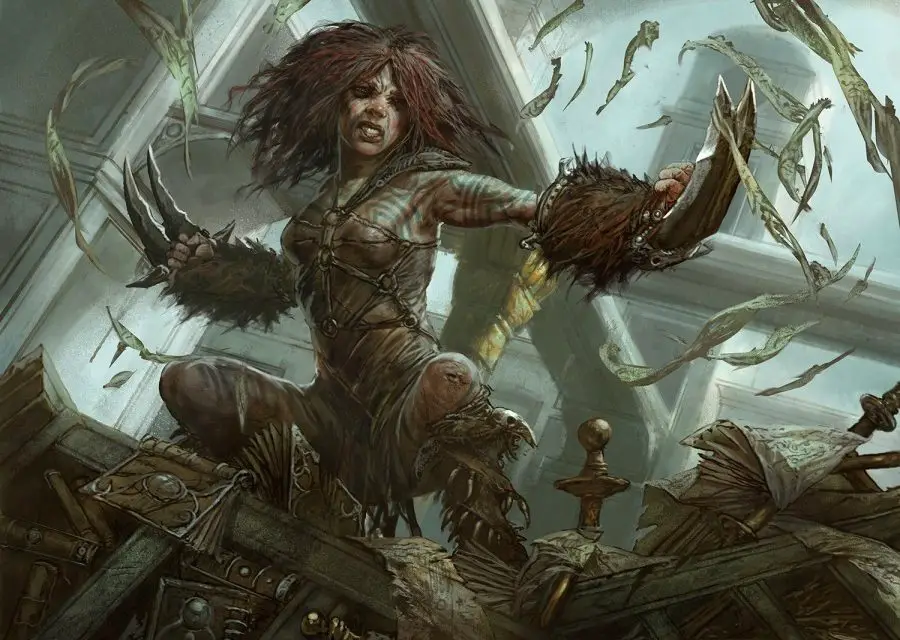

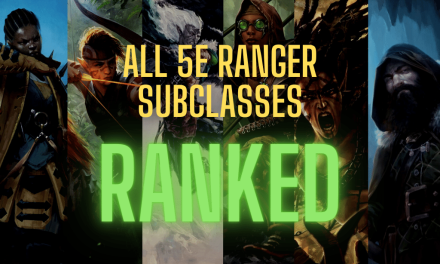

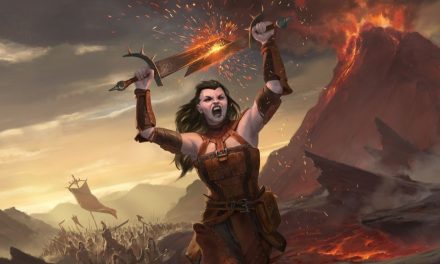
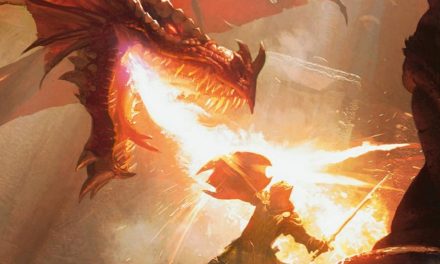



Recent Comments